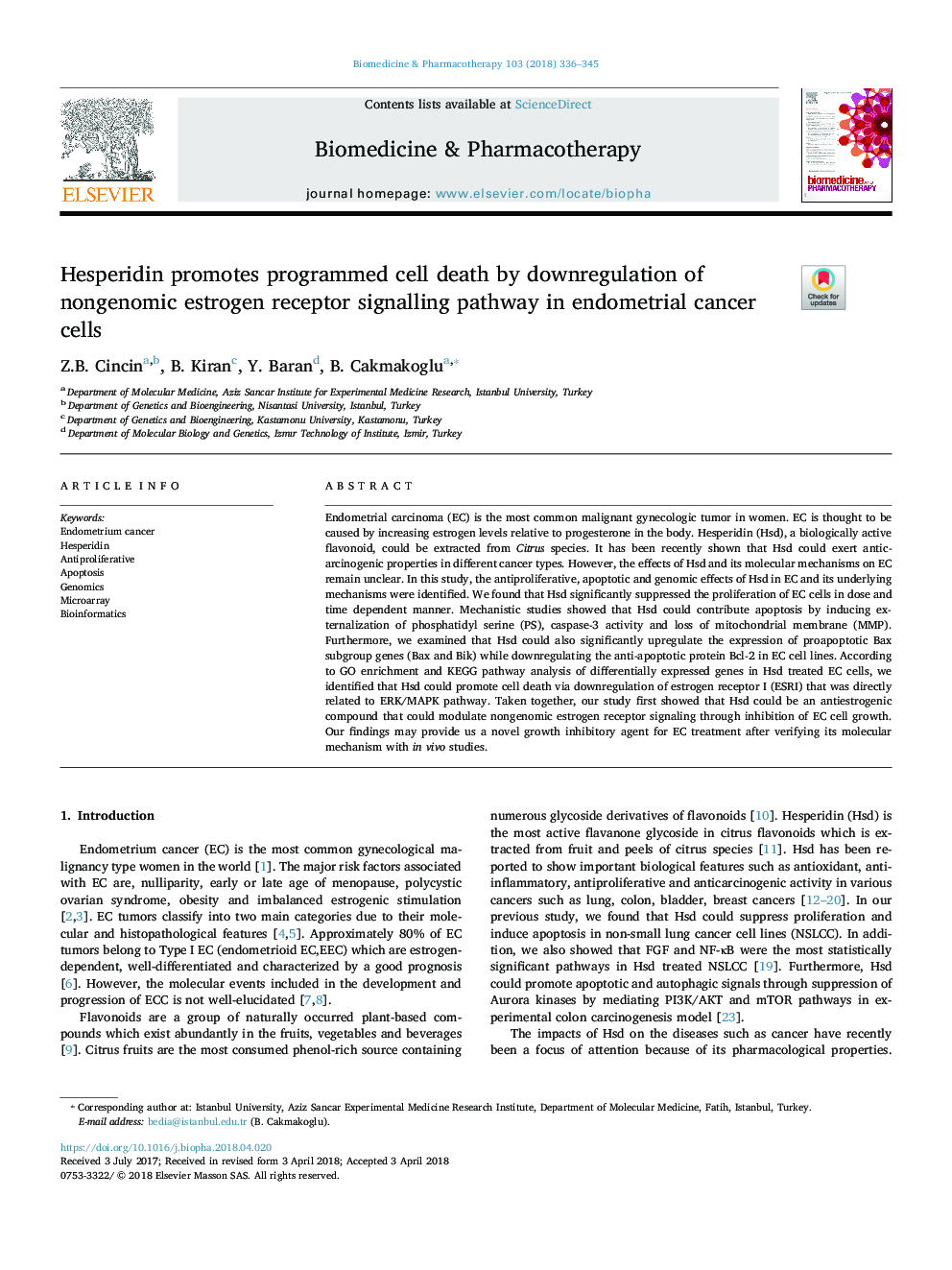| کد مقاله | کد نشریه | سال انتشار | مقاله انگلیسی | نسخه تمام متن |
|---|---|---|---|---|
| 8525372 | 1557939 | 2018 | 10 صفحه PDF | دانلود رایگان |
عنوان انگلیسی مقاله ISI
Hesperidin promotes programmed cell death by downregulation of nongenomic estrogen receptor signalling pathway in endometrial cancer cells
ترجمه فارسی عنوان
هسپریدین باعث کاهش مرگ سلولی برنامه ریزی شده توسط کمینه سازی مسیر سیگنالینگ گیرنده استروژن غیر سلولی در سلول های سرطانی اندومتر
دانلود مقاله + سفارش ترجمه
دانلود مقاله ISI انگلیسی
رایگان برای ایرانیان
کلمات کلیدی
موضوعات مرتبط
علوم پزشکی و سلامت
پزشکی و دندانپزشکی
تومور شناسی
چکیده انگلیسی
Endometrial carcinoma (EC) is the most common malignant gynecologic tumor in women. EC is thought to be caused by increasing estrogen levels relative to progesterone in the body. Hesperidin (Hsd), a biologically active flavonoid, could be extracted from Citrus species. It has been recently shown that Hsd could exert anticarcinogenic properties in different cancer types. However, the effects of Hsd and its molecular mechanisms on EC remain unclear. In this study, the antiproliferative, apoptotic and genomic effects of Hsd in EC and its underlying mechanisms were identified. We found that Hsd significantly suppressed the proliferation of EC cells in dose and time dependent manner. Mechanistic studies showed that Hsd could contribute apoptosis by inducing externalization of phosphatidyl serine (PS), caspase-3 activity and loss of mitochondrial membrane (MMP). Furthermore, we examined that Hsd could also significantly upregulate the expression of proapoptotic Bax subgroup genes (Bax and Bik) while downregulating the anti-apoptotic protein Bcl-2 in EC cell lines. According to GO enrichment and KEGG pathway analysis of differentially expressed genes in Hsd treated EC cells, we identified that Hsd could promote cell death via downregulation of estrogen receptor I (ESRI) that was directly related to ERK/MAPK pathway. Taken together, our study first showed that Hsd could be an antiestrogenic compound that could modulate nongenomic estrogen receptor signaling through inhibition of EC cell growth. Our findings may provide us a novel growth inhibitory agent for EC treatment after verifying its molecular mechanism with in vivo studies.
ناشر
Database: Elsevier - ScienceDirect (ساینس دایرکت)
Journal: Biomedicine & Pharmacotherapy - Volume 103, July 2018, Pages 336-345
Journal: Biomedicine & Pharmacotherapy - Volume 103, July 2018, Pages 336-345
نویسندگان
Z.B. Cincin, B. Kiran, Y. Baran, B. Cakmakoglu,
